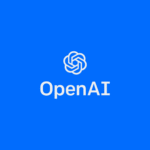With an official $3 billion contract, Windsurf Technologies has formally teamed with OpenAI, a move likely to change the course of artificial intelligence infrastructure. Understood as a strategic acquisition and technological alliance, this deal highlights OpenAI’s aspirations to maintain its worldwide leadership in artificial intelligence research.
Windsurf: The Scene’s behind Infrastructure Powerhouse
Originally a quiet but powerful participant in the field of high-performance computing (HPC) and artificial intelligence infrastructure. Windsurf specialises in creating distributed systems suitable for large-scale model training. As a core component of large language models (LLMs), the company has created unique networking technologies, enhanced interconnect protocols, and specialised silicon accelerators targeted to maximise throughput for transformer-based applications.
Custom low-latency fabrics and a dynamic memory optimisation stack enable Windsurf’s success to be realized—the real-time scaling of multimodal workloads over hundreds of GPUs is made possible. Although Nvidia still rules the AI computing space, Windsurf’s work has been crucial in allowing hyperscalers to derive improved performance-per-dollar measurements from their current setup.
Originally founded in 2018 by former Google Brain and Intel engineers, Windsurf has developed close ties with leading AI laboratories by providing cloud-agnostic orchestration systems, optimised training pipelines, and energy-efficient cluster designs. Its infrastructure has driven major initiatives in many different fields, including drug discovery and driverless cars, recently.
Deal for the Strategic Argument
The acquisition of Windsurf by OpenAI is more about consolidating basic technologies that will provide a long-term strategic edge than it is about consuming raw computational capability. Microsoft continues to be OpenAI’s key investor and infrastructure partner—mostly via Azure—but this purchase marks OpenAI’s attempt to take more control over its lowest tiers of the stack.
Sources around the deal indicate that the main drivers are:
1. Model Training and Inference Optimisation
The effectiveness of compute distribution and data transfer becomes mission-critical as model sizes span the trillion-parameter range. Up to 18% performance improvements over traditional systems come from Windsurf’s dynamic routing algorithms and latency-aware compiler toolchains.
2. Sustainability and Economic Efficiency
Tens of millions of AI training runs for each model mean pressure on OpenAI to increase computational efficiency. The energy-aware scheduling systems and cooling-optimised data centre designs of Windsurf fit OpenAI’s long-term objective of attaining AGI (artificial general intelligence) in a sustainable way.
3. IP Consolidation and Talent Acquisition:
The 140-person technical team of Windsurf carries with them a unique mix of low-level hardware knowledge and extensive artificial intelligence systems design. Important acquisition recruits should oversee OpenAI’s new Systems Efficiency Research Lab.
4. Minimising Cloud Dependency
Although OpenAI’s commercial APIs and ChatGPT products still use Azure as their backend, hybrid clouds and on-site optimisations are becoming increasingly important. OpenAI finds it simpler, thanks to Windsurf’s technology, to explore cloud abstraction and increase robustness across multi-cloud systems.
### Structural and Financial Details
With performance-based earnouts linked to long-term efficiency benchmarks, the acquisition is valued in cash and stock at around $3 billion. Focused solely on infrastructure innovation and optimisation, Windsurf will remain a semi-independent business under OpenAI.
Unlike previous acquisitions by big artificial intelligence companies—many of which focused on growing user bases or product verticals—this deal is essentially technical in character. It gambled on long-term platform leverage and fundamental engineering.
Sam Altman, OpenAI CEO, said, “Our partnership with Windsurf will assist in speeding the development of more powerful, aligned, and efficient AI systems. Infrastructure is a fundamental strategic asset, not only a supporting tool.
Dr Anika Roy, CEO of Windsurf, agreed: “Joining OpenAI allows us to use our research, and we are exploring systems engineering at an unprecedented scale. We shall collectively challenge the limits of artificial intelligence capability.
Industry Reperceptions
The agreement has ramifications throughout the scene of artificial intelligence and cloud computing. Providers of infrastructure such as AWS, Google Cloud, and Oracle are keenly observing, as this indicates a rising trend of AI laboratories seeking to create or buy their own infrastructure layers instead of depending just on outside platforms.
Many experts think this is part of a larger movement towards AI-native infrastructure, where conventional computing and networking architectures are being reinvented, especially for the demands of AI/ML workloads. These require:
- Between GPU nodes, high I/O throughput;
- Optimised training across sparsely active models;
- Fine-grained telemetry and observability during training;
- Low-overhead checkpointing and rollback systems
Although OpenAI has always teamed with Nvidia for hardware requirements, this purchase puts it in a position to co-design or even manufacture its own specialised accelerators going forward. OpenAI may follow Google’s TPU effort or Amazon’s Trainium processors using Windsurf’s silicon team and IP portfolio.
Furthermore, Windsurf’s technologies might greatly increase inference efficiency on the edge—a crucial need as OpenAI’s models are progressively included in outside projects ranging from mobile devices to corporate SaaS platforms.
Competitive Dynamics
Many of the other big AI labs—including Anthropic, Mistral, and Cohere, many of which still mostly rely on public cloud partners for computing provisioning—are under competitive pressure from this purchase. It may also hasten the market consolidation of the AI infrastructure, thereby stimulating more M&A activity.
Small infrastructure companies with strong knowledge of model compression, compiler tools, or energy optimisation can suddenly acquire targets for themselves. Already reevaluating their portfolios, venture capital corporations are looking for businesses that may be strategic assets in the hunt for artificial general intelligence.
Microsoft, which is OpenAI’s closest partner, is likely to benefit subtly from this agreement. Azure environments allow Windsurf’s optimisations to be utilised, thereby enhancing service delivery for OpenAI and more general corporate customers.
What direction is OpenAI headed?
OpenAI is likely to reveal a number of fresh infrastructure capabilities over the next 12 months with Windsurf onboard. These might consist of:
- Designed for lower energy consumption per training run.
- ChatGPT can scale horizontally across global clusters thanks to its distributed inference protocols, specifically designed for GPT-5 and beyond.
- This involves real-time learning loops that integrate user feedback into model weights while minimising retraining lag.
The acquisition may also accelerate OpenAI’s goals related to agentic artificial intelligence systems—autonomous agents capable of long-term planning and tool usage. All of Windsurf’s stacks serve these systems, which require constant memory, job decomposition, and quick context-switching across distributed contexts.
Notes
The $3 billion purchase of Windsurf by OpenAI signifies a pivotal moment in the evolution of the AI era, extending beyond mere business news. The distinctions between hardware, software, and infrastructure are diminishing as models become more capable and the demand for computation increases rapidly.
Bringing windsurf in-house guarantees a technological edge and sets the foundation for a day when artificial intelligence solutions will be quicker, less expensive, and more environmentally friendly. In the race for artificial general intelligence, infrastructure is a long-term bet on a competitive differentiation.










